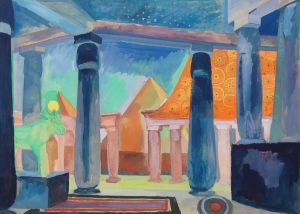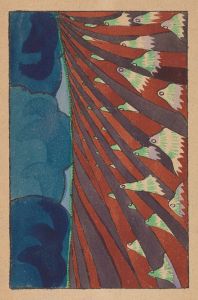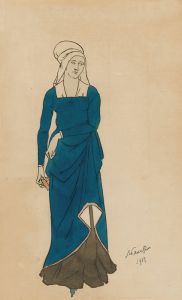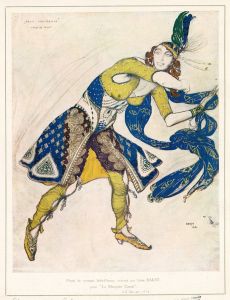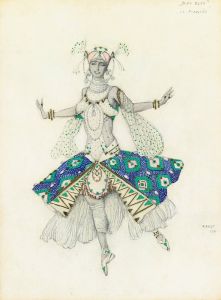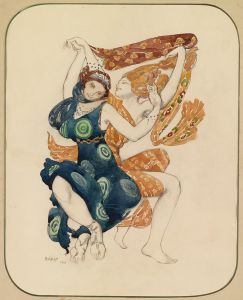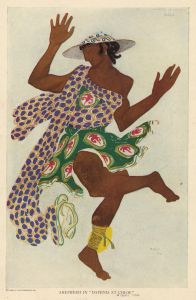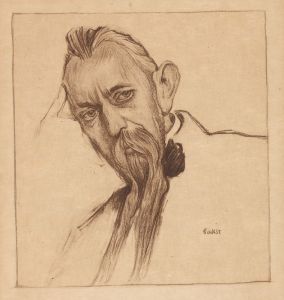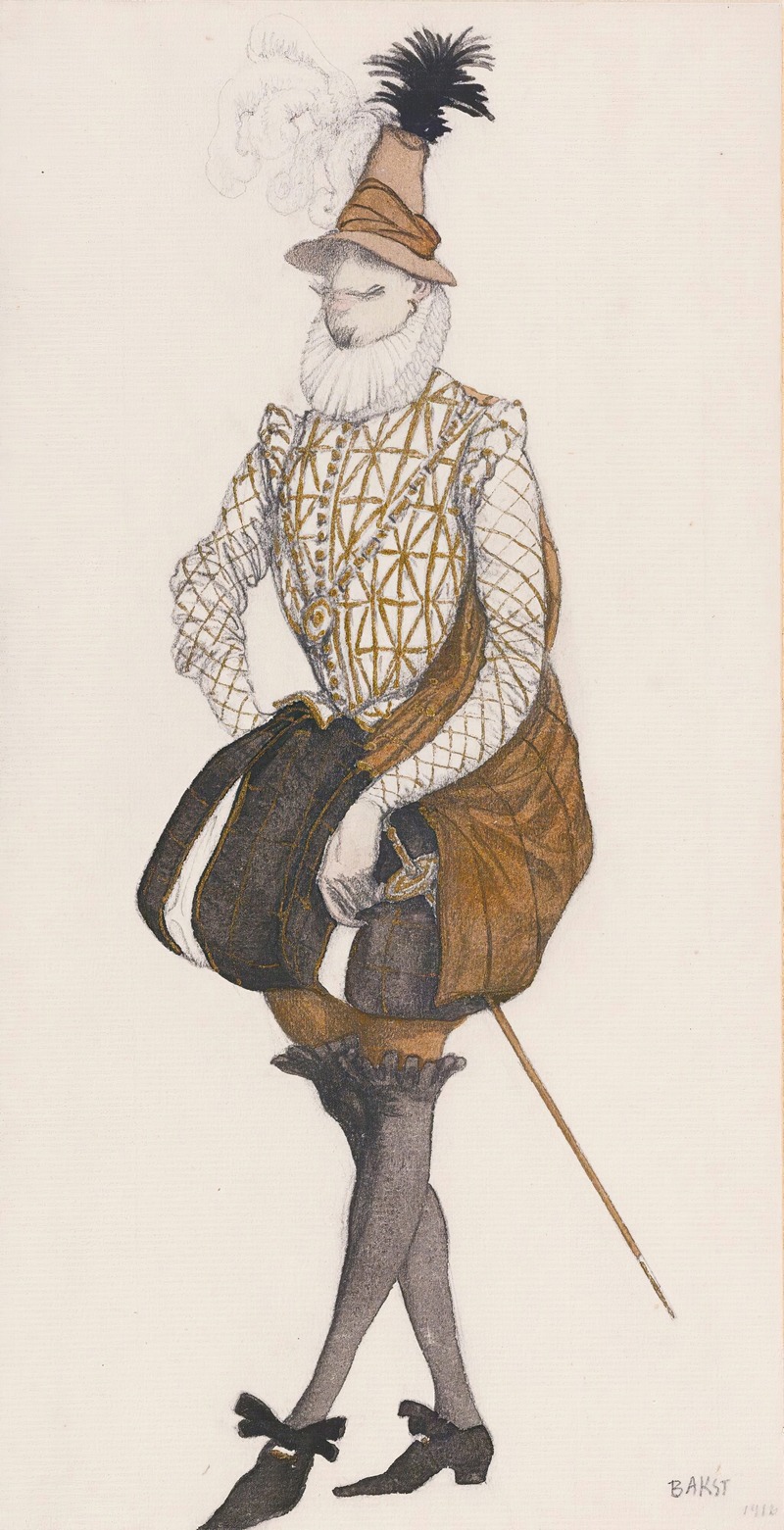
Costume Design For Prince Espagnol From The Ballet The Sleeping Beauty
A hand-painted replica of Léon Bakst’s masterpiece Costume Design For Prince Espagnol From The Ballet The Sleeping Beauty, meticulously crafted by professional artists to capture the true essence of the original. Each piece is created with museum-quality canvas and rare mineral pigments, carefully painted by experienced artists with delicate brushstrokes and rich, layered colors to perfectly recreate the texture of the original artwork. Unlike machine-printed reproductions, this hand-painted version brings the painting to life, infused with the artist’s emotions and skill in every stroke. Whether for personal collection or home decoration, it instantly elevates the artistic atmosphere of any space.
Léon Bakst, a prominent Russian artist and stage designer, created the costume design for the character Prince Espagnol in the ballet The Sleeping Beauty. This work is one of Bakst's many contributions to the world of theatrical design, particularly during the early 20th century when he was associated with the Ballets Russes, a groundbreaking ballet company founded by Sergei Diaghilev. Bakst's designs are celebrated for their vibrant colors, intricate patterns, and innovative approach to costume and set design, which significantly influenced the visual aesthetics of modern theater.
The ballet The Sleeping Beauty was originally composed by Pyotr Ilyich Tchaikovsky and choreographed by Marius Petipa, premiering in 1890 at the Mariinsky Theatre in St. Petersburg, Russia. While Bakst did not design for the original production, his work on later adaptations and reinterpretations of the ballet showcased his ability to blend traditional motifs with modern artistic sensibilities. His costume design for Prince Espagnol reflects his fascination with exoticism and historical styles, a hallmark of his artistic vision.
The design for Prince Espagnol is characterized by its elaborate detailing and use of rich, bold colors. Bakst often drew inspiration from a variety of cultural and historical sources, incorporating elements from Spanish fashion and traditional attire into this particular costume. The result is a visually striking ensemble that enhances the character's presence on stage while contributing to the overall narrative and atmosphere of the ballet.
Bakst's work for the Ballets Russes, including his designs for The Sleeping Beauty, played a significant role in redefining the relationship between visual art and performance. His costumes were not merely functional but also works of art in their own right, elevating the visual storytelling of the productions. His innovative approach influenced not only the world of ballet but also fashion and interior design during the early 20th century.
Today, Léon Bakst's costume designs, including the one for Prince Espagnol, are regarded as masterpieces of theatrical art. Many of his original sketches and designs are preserved in museums and private collections, serving as a testament to his enduring legacy in the world of art and performance.





